Gadgets – TechCrunch
Microsoft’s Xbox Adaptive Controller is an inspiring example of inclusive design
Every gamer with a disability faces a unique challenge for many reasons, one of which is the relative dearth of accessibility-focused peripherals for consoles. Microsoft is taking a big step toward fixing this with its Xbox Adaptive Controller, a device created to address the needs of gamers for whom ordinary gamepads aren’t an option.
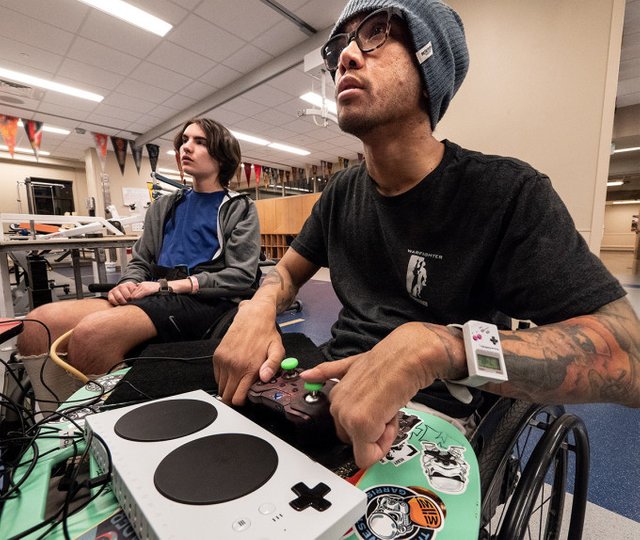 The XAC, revealed officially at a recent event but also leaked a few days ago, is essentially a pair of gigantic programmable buttons and an oversized directional pad; 3.5mm ports on the back let a huge variety of assistive devices like blow tubes, pedals and Microsoft-made accessories plug in.
The XAC, revealed officially at a recent event but also leaked a few days ago, is essentially a pair of gigantic programmable buttons and an oversized directional pad; 3.5mm ports on the back let a huge variety of assistive devices like blow tubes, pedals and Microsoft-made accessories plug in.
It’s not meant to be an all-in-one solution by any means, more like a hub that allows gamers with disabilities to easily make and adjust their own setups with a minimum of hassle. Whatever you’re capable of, whatever’s comfortable, whatever gear you already have, the XAC is meant to enable it.
I’d go into detail, but it would be impossible to do better than Microsoft’s extremely interesting and in-depth post introducing the XAC, which goes into the origins of the hardware, the personal stories of the testers and creators and much more. Absolutely worth taking the time to read.
I look forward to hearing more about the system and how its users put it to use, and I’m glad to see inclusivity and accessibility being pursued in such a practical and carefully researched manner.
Snapchat Spectacles tests non-circular landscape exports
The worst thing about Spectacles is how closely tied they are to Snapchat. The proprietary circular photo and video format looks great inside Snapchat where you can tip your phone around while always staying full screen, but it gets reduced to a small circle with a big white border when you export it to your phone for sharing elsewhere.
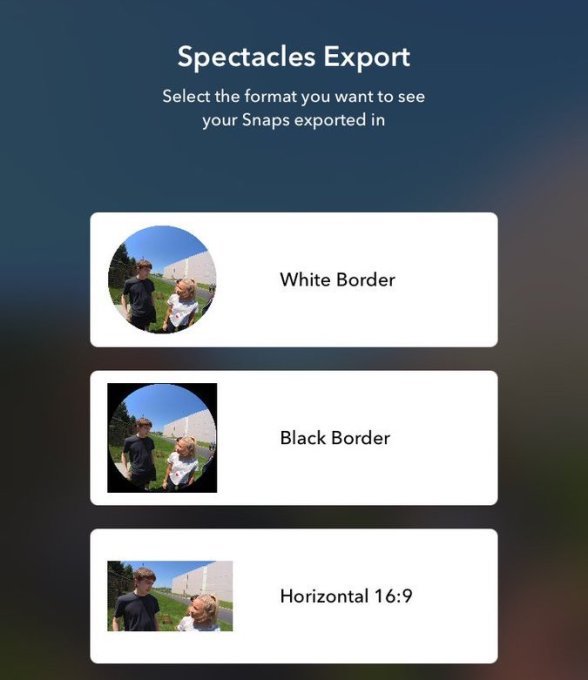 Luckily, Snapchat has started beta testing new export formats for Spectacles through the beta version of its app. This lets you choose a black border instead of a white one, but importantly, also a horizontal 16:9 rectangular format that would fit well on YouTube and other traditional video players. The test was first spotted by Erik Johnson, and, when asked, a Snapchat spokesperson told TechCrunch “I can confirm we’re testing it, yes.”
Luckily, Snapchat has started beta testing new export formats for Spectacles through the beta version of its app. This lets you choose a black border instead of a white one, but importantly, also a horizontal 16:9 rectangular format that would fit well on YouTube and other traditional video players. The test was first spotted by Erik Johnson, and, when asked, a Snapchat spokesperson told TechCrunch “I can confirm we’re testing it, yes.”
Allowing Spectacles to be more compatible with other services could make the v2 of its $150 photo and video-recording sunglasses much more convenient and popular. I actually ran into the Snapchat Spectacles team this weekend at the FORM Arcosanti music festival in Arizona where they were testing the new Specs and looking for ideas for their next camera. I suggested open sourcing the circular format or partnering so other apps could show it natively with the swivel effect, and Snap declined to comment about that. But now it looks like they’re embracing compatibility by just letting you ditch the proprietary format.
Breaking away from purely vertical or circular formats is also a bit of a coup for Snapchat, which has touted vertical as the media orientation of the future as that’s how we hold our phones. Many other apps, including Facebook’s Snapchat clones, adopted this idea. But with Snapchat’s growth slipping to its lowest rate ever, it may need to think about new ways to gain exposure elsewhere.
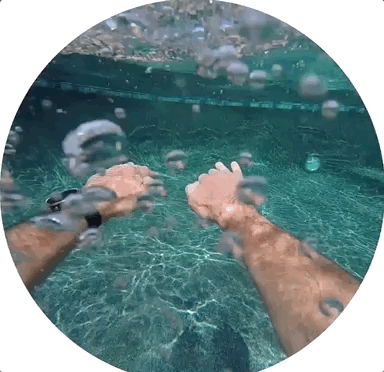
Seeing Spectacles content on other apps without ugly borders could draw attention back to Snapchat, or at least help Spectacles sell better than v1, which only sold 220,000 pairs and had to write-off hundreds of thousands more that were gathering dust in warehouses. While it makes sense why Snap might have wanted to keep the best Spectacles content viewing experience on its own app, without user growth, that’s proven a software limitation for what’s supposed to be a camera company.
I’m in love with Astell&Kern’s crooked, beautiful, ridiculously expensive MP3 player
It may be old-fashioned, but I find dedicated MP3 players wonderful little devices. I’ve used tons over the years (the Zune HD is still the best) and I’m glad to see they live on in some fashion, even if it’s as an objet d’art jammed with audiophile knick-knacks and a $700 price tag: Astell&Kern’s A&norma SR15.
Look at that thing! The ground of the tech world is littered with anonymous-looking lozenges made to appeal to as many people as possible. Then you have this thing.
What a design choice, to tilt the screen like that and form the rest of the device from prism-like complementary rectangles! The site even has a “design concept” page, on which it points out that this isn’t a purely aesthetic choice:
The slight angle and precise, mindful alignment show the empty space and tones that fills the space.
From any angle, or either hand you hold your device, it does not hinder the display screen and offers the best grip.
Isn’t that wonderful? And it’s even kind of true! Those areas we so carefully avoid with our fingers or thumbs are now grippable.
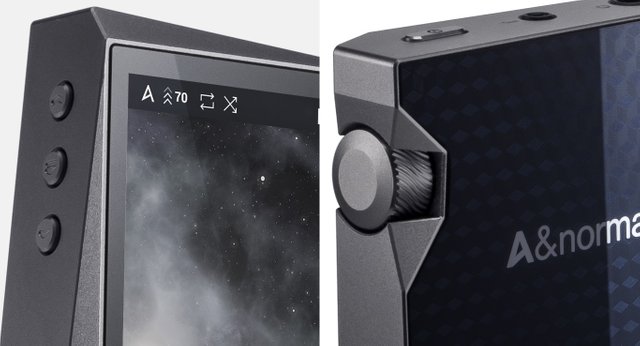 Meanwhile, the tilted screen also makes room for the knurled volume knob, while simultaneously protecting it from unwanted touches. And the angle of the screen makes for a visual hint for the power button.
Meanwhile, the tilted screen also makes room for the knurled volume knob, while simultaneously protecting it from unwanted touches. And the angle of the screen makes for a visual hint for the power button.
I just love how risky this design is, how eye-catching, how simultaneously practical and impractical. We need much more of that in tech. This device has more personality than every iPhone since the 6 — combined.
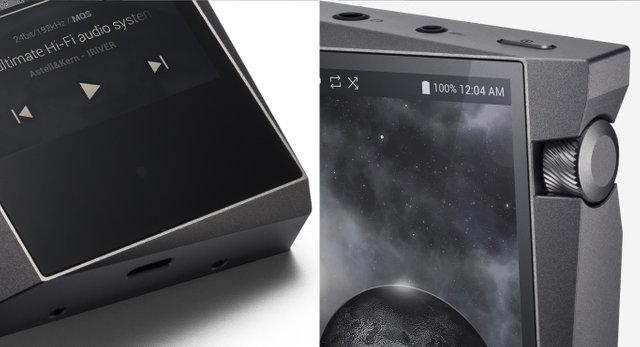 Inside is the usual blast of audio jargon: Cirrus Logic Dual DAC, native direct stream digital, 24-bit 192KHz playback, balanced 2.5mm headphone out and a quad-core CPU to support it all. Do you need any of that? Probably not, but a few people might, and at least you’ll be sure this thing will play pretty much anything you throw at it and sound great doing so.
Inside is the usual blast of audio jargon: Cirrus Logic Dual DAC, native direct stream digital, 24-bit 192KHz playback, balanced 2.5mm headphone out and a quad-core CPU to support it all. Do you need any of that? Probably not, but a few people might, and at least you’ll be sure this thing will play pretty much anything you throw at it and sound great doing so.
I’ve used a few of A&K’s previous products, and can testify that they’re extremely well-built and feel great to use, though the screens are a bit low-resolution and the UI can be lacking. The 3.3-inch screen isn’t going to blow anyone away with its 800×480 resolution, but it should be sharp enough, and the UI got a redo between the devices I’ve used and the SR15. I’m eager to see if it’s more fun to use now.
The A&norma SR15 is available now for anyone with a pocket full of money to burn.
This jolly little robot gets goosebumps
Cornell researchers have made a little robot that can express its emotions through touch, sending out little spikes when it’s scared or even getting goosebumps to express delight or excitement. The prototype, a cute smiling creature with rubber skin, is designed to test touch as an I/O system for robotic projects.
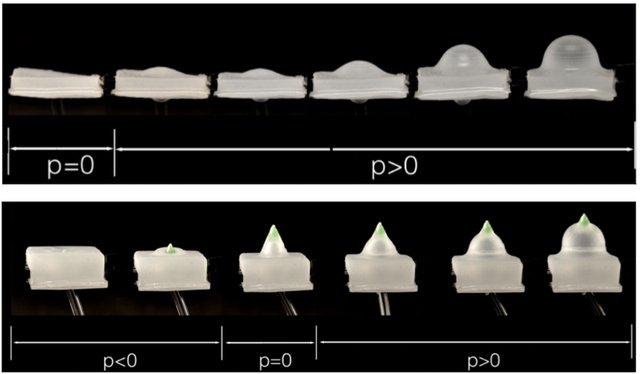
The robot mimics the skin of octopi which can turn spiky when threatened.
The researchers, Yuhan Hu, Zhengnan Zhao, Abheek Vimal and Guy Hoffman, created the robot to experiment with new methods for robot interaction. They compare the skin to “human goosebumps, cats’ neck fur raising, dogs’ back hair, the needles of a porcupine, spiking of a blowfish, or a bird’s ruffled feathers.”
“Research in human-robot interaction shows that a robot’s ability to use nonverbal behavior to communicate affects their potential to be useful to people, and can also have psychological effects. Other reasons include that having a robot use nonverbal behaviors can help make it be perceived as more familiar and less machine-like,” the researchers told IEEE Spectrum.
The skin has multiple configurations and is powered by a computer-controlled elastomer that can inflate and deflate on demand. The goosebumps pop up to match the expression on the robot’s face, allowing humans to better understand what the robot “means” when it raises its little hackles or gets bumpy. I, for one, welcome our bumpy robotic overlords.
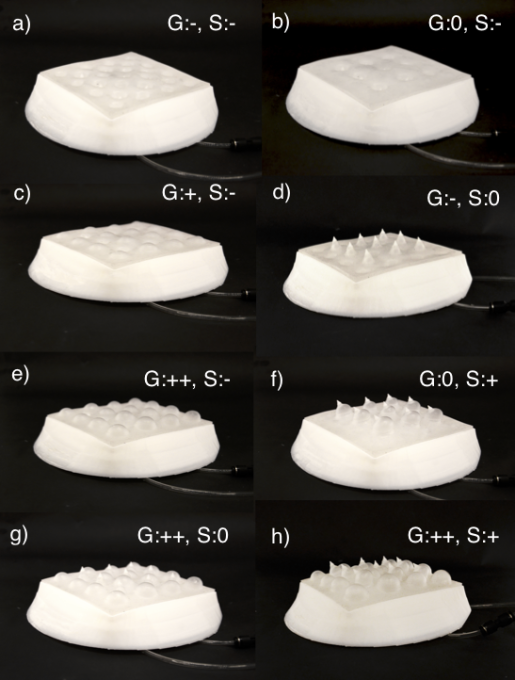
Watch a laser-powered RoboFly flap its tiny wings
Making something fly involves a lot of trade-offs. Bigger stuff can hold more fuel or batteries, but too big and the lift required is too much. Small stuff takes less lift to fly but might not hold a battery with enough energy to do so. Insect-sized drones have had that problem in the past — but now this RoboFly is taking its first flaps into the air… all thanks to the power of lasers.
We’ve seen bug-sized flying bots before, like the RoboBee, but as you can see it has wires attached to it that provide power. Batteries on board would weigh it down too much, so researchers have focused in the past on demonstrating that flight is possible in the first place at that scale.
But what if you could provide power externally without wires? That’s the idea behind the University of Washington’s RoboFly, a sort of spiritual successor to the RoboBee that gets its power from a laser trained on an attached photovoltaic cell.
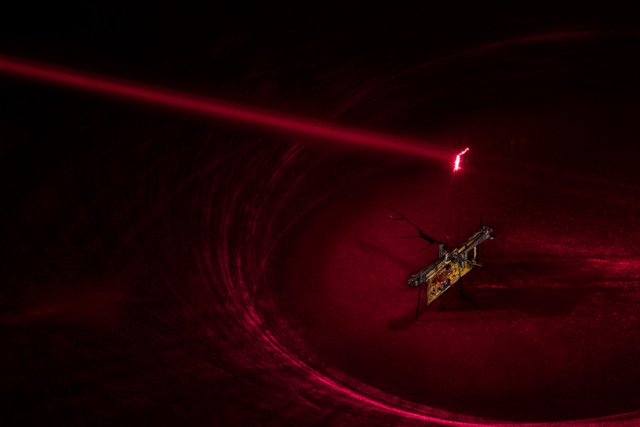 “It was the most efficient way to quickly transmit a lot of power to RoboFly without adding much weight,” said co-author of the paper describing the bot, Shyam Gollakota. He’s obviously very concerned with power efficiency — last month he and his colleagues published a way of transmitting video with 99 percent less power than usual.
“It was the most efficient way to quickly transmit a lot of power to RoboFly without adding much weight,” said co-author of the paper describing the bot, Shyam Gollakota. He’s obviously very concerned with power efficiency — last month he and his colleagues published a way of transmitting video with 99 percent less power than usual.
There’s more than enough power in the laser to drive the robot’s wings; it gets adjusted to the correct voltage by an integrated circuit, and a microcontroller sends that power to the wings depending on what they need to do. Here it goes:
“To make the wings flap forward swiftly, it sends a series of pulses in rapid succession and then slows the pulsing down as you get near the top of the wave. And then it does this in reverse to make the wings flap smoothly in the other direction,” explained lead author Johannes James.
At present the bot just takes off, travels almost no distance and lands — but that’s just to prove the concept of a wirelessly powered robot insect (it isn’t obvious). The next steps are to improve onboard telemetry so it can control itself, and make a steered laser that can follow the little bug’s movements and continuously beam power in its direction.
The team is headed to Australia next week to present the RoboFly at the International Conference on Robotics and Automation in Brisbane.
First CubeSats to travel the solar system snap ‘Pale Blue Dot’ homage
The InSight launch earlier this month had a couple of stowaways: a pair of tiny CubeSats that are already the farthest such tiny satellites have ever been from Earth — by a long shot. And one of them got a chance to snap a picture of their home planet as an homage to the Voyager mission’s famous “Pale Blue Dot.” It’s hardly as amazing a shot as the original, but it’s still cool.
The CubeSats, named MarCO-A and B, are an experiment to test the suitability of pint-size craft for exploration of the solar system; previously they have only ever been deployed into orbit.
That changed on May 5, when the InSight mission took off, with the MarCO twins detaching on a similar trajectory to the geology-focused Mars lander. It wasn’t long before they went farther than any CubeSat has gone before.
A few days after launch MarCO-A and B were about a million kilometers (621,371 miles) from Earth, and it was time to unfold its high-gain antenna. A fisheye camera attached to the chassis had an eye on the process and took a picture to send back home to inform mission control that all was well.
But as a bonus (though not by accident — very few accidents happen on missions like this), Earth and the moon were in full view as MarCO-B took its antenna selfie. Here’s an annotated version of the one above:
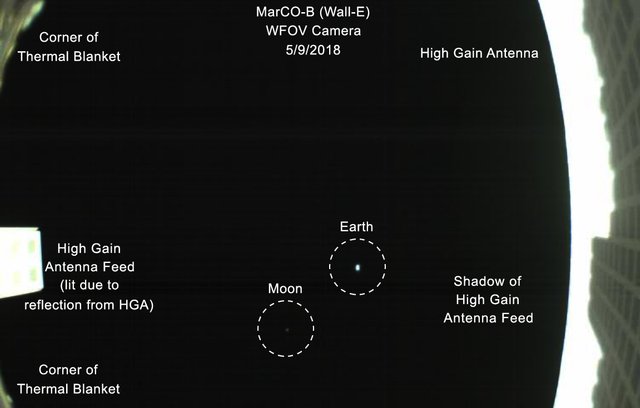
“Consider it our homage to Voyager,” said JPL’s Andy Klesh in a news release. “CubeSats have never gone this far into space before, so it’s a big milestone. Both our CubeSats are healthy and functioning properly. We’re looking forward to seeing them travel even farther.”
So far it’s only good news and validation of the idea that cheap CubeSats could potentially be launched by the dozen to undertake minor science missions at a fraction of the cost of something like InSight.
Don’t expect any more snapshots from these guys, though. A JPL representative told me the cameras were really only included to make sure the antenna deployed properly. Really any pictures of Mars or other planets probably wouldn’t be worth looking at twice — these are utility cameras with fisheye lenses, not the special instruments that orbiters use to get those great planetary shots.
The MarCOs will pass by Mars at the same time that InSight is making its landing, and depending on how things go, they may even be able to pass on a little useful info to mission control while it happens. Tune in on November 26 for that!
Source: https://techcrunch.com/
This user is on the @buildawhale blacklist for one or more of the following reasons:
You got a 50.00% upvote from @payforplay! Please consider delegating steem power to @payforplay. We are currently sharing 100% of our profits with our delegators. That's correct, 100%! It doesn't get better than that. It is essentially running your own bid bot without doing any of the work. Steem power can be delegated here: https://steembottracker.com/delegation.html